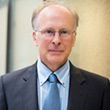How Tight Is the Labor Market?
This post is the first of a two-part series exploring slack in the labor market. The second post, “Labor Market Slack and the Insured Unemployment Rate” will appear on Tuesday, Nov. 3.
In some discussions of the current state of the U.S. labor market, it is argued that there is more “slack” in U.S. labor markets than might be apparent. For example, some argue that the unemployment rate, which stood at 5.1 percent in September, does not fully reflect hidden unemployed, such as discouraged workers (those who have stopped searching for work and have dropped out of the labor force) and those who are working part time but would prefer to work full time.
In modern models of labor market search,1 which help economists explain labor market behavior, a typical measure of labor market tightness is the ratio v/u, where v is the number of vacancies posted in the labor market and u is the number of unemployed. According to this measure, which is depicted in the following figure, the labor market is tighter the greater the number of firms seeking to fill jobs relative to the number of would-be workers looking for jobs.
By this measure, the U.S. labor market is as tight as it has been at any time between the past two recessions.
Another way to look at labor market tightness is to plot the labor market vacancy rate against the unemployment rate. Such a scatter plot traces out what is known as the Beveridge curve, depicted in the next figure.
In this scatter plot, the line joins observations from December 2000 to July 2015, from the top left-hand corner to the lower right-hand corner, and back. A key feature of the scatter plot is the curve’s shift to the right that occurred during the Great Recession (December 2007 through June 2009). Some economists have argued that this shift is due to “mismatch unemployment.”2 The idea is that the Great Recession created a greater mismatch between the skills desired by firms and the skills offered on the market by would-be workers.
One can, in part, explain the shift in the Beveridge curve by decomposing unemployment by duration. That is, the shift in the curve seems to be due to a large increase in the number of long-term unemployed that occurred during the Great Recession. This is consistent with the mismatch idea, as unemployed people subject to the mismatch problem tend to be unemployed a long time.
Indeed, one dimension of labor market performance that has not returned to levels which we would consider normal before the Great Recession is long-term unemployment. The next figure shows the number of unemployed for 27 weeks or more.
According to the figure, the number of long-term unemployed is still larger than at any time between the past two recessions. Another important observation relates to the flow of workers each month from the unemployment pool to not-in-the-labor-force (NILF). These are workers who have been searching for work, and then stopped searching and left the labor force. If we plot this flow against the number of long-term unemployed, we obtain the next figure.
The key takeaway from this figure is that flows from unemployment to NILF tend to be positively correlated with the number of long-term unemployed. Basically, the long-term unemployed are relatively highly likely to drop out of the labor force.
Therefore, if we think of the long-term unemployed as being subject to the mismatch problem and highly likely to leave the labor force, then these unemployed workers are not contributing much to labor market slack. They are unlikely to be hired under any conditions.
Going back to the third figure, there are currently about 1 million more long-term unemployed than there were in late 2007 before the Great Recession began. If we think that the quantity of long-term unemployed will return to 2007 levels, then roughly 1 million of those currently unemployed may be leaving the labor force. If we count those 1 million people as NILF rather than unemployed, the unemployment rate would be 4.6 percent, rather than 5.1 percent. We might then think of 4.6 percent as more accurately reflecting the state of unemployment in the labor market, rather than 5.1 percent.
Additional measures of unemployment also show that labor markets may be tighter than most may assume. In tomorrow’s post, we’ll look at a nonstandard measure of unemployment: the insured unemployment rate.
Notes and References
1 For example, see Shimer, Robert. “The Cyclical Behavior of Equilibrium Unemployment and Vacancies,” American Economic Review, March 2005, Vol. 95, Issue 1, pp. 25-49.
2 For example, see Sahin, Aysegül; Song, Joseph; Topa, Giorgio; and Violante, Giovanni. “Mismatch Unemployment,” American Economic Review, forthcoming.
Additional Resources
- On the Economy: Where in the Map Is Low Inflation Coming from?
- On the Economy: Has the Phillips Curve Relationship Broken Down?
- On the Economy: How Have Prime-Age Workers in School Affected the Labor Market?
Citation
Stephen Williamson, ldquoHow Tight Is the Labor Market?,rdquo St. Louis Fed On the Economy, Nov. 2, 2015.
This blog offers commentary, analysis and data from our economists and experts. Views expressed are not necessarily those of the St. Louis Fed or Federal Reserve System.
Email Us
All other blog-related questions


